
The Story So Far ---- West Dorset Roots
Introduction
My name is Lesley Keatley (nee Warwick), I was born in Reading and grew up in Woodley and Spencer’s Wood. I now live in Kent with my husband Les and 3 children (all Boys).
My Mother Winifred Constance Dorey was born in Wokingham and grew up in Twyford; she was the daughter of Nora Emily Freeman born in Goring, and Charles Harry Dorey born in Twyford.
My father was Percy Thomas Warwick born in Allahabad, India. He was the son of Major Thomas Warwick born in Hurst, Twyford (he served as an Army Officer in India), and Florence Evelyn Davis born in Bengal, India.
My name is Lesley Keatley (nee Warwick), I was born in Reading and grew up in Woodley and Spencer’s Wood. I now live in Kent with my husband Les and 3 children (all Boys).
My Mother Winifred Constance Dorey was born in Wokingham and grew up in Twyford; she was the daughter of Nora Emily Freeman born in Goring, and Charles Harry Dorey born in Twyford.
My father was Percy Thomas Warwick born in Allahabad, India. He was the son of Major Thomas Warwick born in Hurst, Twyford (he served as an Army Officer in India), and Florence Evelyn Davis born in Bengal, India.


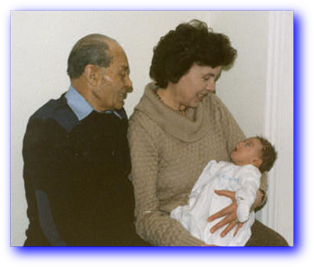
The ancestral line we will be following this time, is my mothers maternal line, that of My Grandmothers ‘Nanny’ (Nora Emily Freeman) family.
Nora’s parents were Mary Elizabeth Gape and George Henry Freeman. They had a difficult life as they had to move every Michaelmas (end of September). George was a Farm Labourer and moved around from farm to farm to follow work. Mary was told by her mother Elizabeth that she was marrying beneath her. Obviously Mary married her beloved and embarked on a difficult life, and as I was told by my Mother and Nanny, Mary ended up regretting her decision. She died in 1915 “due to women’s problems” (as Nanny put it) at the age of just 50 years.
Nora’s parents were Mary Elizabeth Gape and George Henry Freeman. They had a difficult life as they had to move every Michaelmas (end of September). George was a Farm Labourer and moved around from farm to farm to follow work. Mary was told by her mother Elizabeth that she was marrying beneath her. Obviously Mary married her beloved and embarked on a difficult life, and as I was told by my Mother and Nanny, Mary ended up regretting her decision. She died in 1915 “due to women’s problems” (as Nanny put it) at the age of just 50 years.
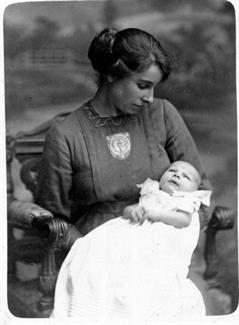
'I remember a portrait of Mary Gape that hung over my grandfather’s chair in my grandparents home, but no-one seems to recall what happened to it. That is sad as it appears to be the only picture of her.'
‘With today’s technology it is so much easier to preserve all our old photos and prints’.
“I have photographs that I have been looking at since I was a child, these photos are now well over 100 years old and are falling to bits and covered with fingerprint burns”. We are now scanning all these photos at the highest Quality, so that we can reprint for our children and grandchildren to hold touch and enjoy just as I did. Whilst a scanned photo can never replace the original, the scanned copy will enable the original to be kept safe from further damage etc. When scanning, we also scan the backs, and ask the family if they can name anyone!
So many old priceless family photographs have been lost forever for so many sad reasons, or our relatives who were in them have also gone and can no longer identify themselves. As generations move on the knowledge of our ancestors stand still with the people that know or remember, while every picture tells a story it cannot tell you ‘who’, ‘when’ or ‘where’ ,we can guess or try to work it out but the truth stays in the memories of those passed. Our golden rule now is ‘ask anyone who might know while they are still able’, we also adopt these rules in all our ancestry work, ask as many questions as possible for all the little stories etc, while there is still someone to ask.
We have learnt the hard way, by not asking, then it’s too late, and the chance has gone. We can all generalise on the past, but to say I was told “I can remember living in the old cottage, and by the way we had a bucket in the garden to use as a toilet and I remember granddad used to smoke when he went out there, as it made the air more pleasant! And of course we didn’t have running water in the house, we went down the road to a pump, and the village didn’t have ‘electric’ or ‘gas’ , when it got dark the only light we had was a candle, that is if dad had earnt enough to buy one”.
Remember history is our lives today, and tomorrow only we know what we did, why we did it, where we were and who we are.
“I have photographs that I have been looking at since I was a child, these photos are now well over 100 years old and are falling to bits and covered with fingerprint burns”. We are now scanning all these photos at the highest Quality, so that we can reprint for our children and grandchildren to hold touch and enjoy just as I did. Whilst a scanned photo can never replace the original, the scanned copy will enable the original to be kept safe from further damage etc. When scanning, we also scan the backs, and ask the family if they can name anyone!
So many old priceless family photographs have been lost forever for so many sad reasons, or our relatives who were in them have also gone and can no longer identify themselves. As generations move on the knowledge of our ancestors stand still with the people that know or remember, while every picture tells a story it cannot tell you ‘who’, ‘when’ or ‘where’ ,we can guess or try to work it out but the truth stays in the memories of those passed. Our golden rule now is ‘ask anyone who might know while they are still able’, we also adopt these rules in all our ancestry work, ask as many questions as possible for all the little stories etc, while there is still someone to ask.
We have learnt the hard way, by not asking, then it’s too late, and the chance has gone. We can all generalise on the past, but to say I was told “I can remember living in the old cottage, and by the way we had a bucket in the garden to use as a toilet and I remember granddad used to smoke when he went out there, as it made the air more pleasant! And of course we didn’t have running water in the house, we went down the road to a pump, and the village didn’t have ‘electric’ or ‘gas’ , when it got dark the only light we had was a candle, that is if dad had earnt enough to buy one”.
Remember history is our lives today, and tomorrow only we know what we did, why we did it, where we were and who we are.

The family had very little money and couldn’t afford a grave stone. When her husband George passed away in 1945 he was buried with his wife Mary. They had a son Frederick who passed away at the tender age of just 18 months, he was also buried in the same churchyard along the North Wall, I was told that Nanny could
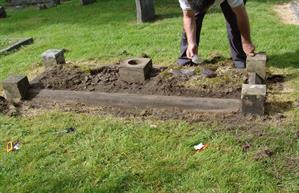
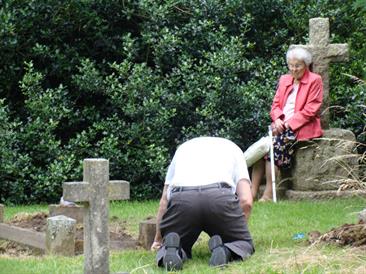
.
It suffers the same problems as West Dorset, as the property prices have rocketed to stupid levels (because of ‘outsiders’ moving in, such as Uri Geller who has a home in the village, and which Michael Jackson visited on occasions). The reason is its locality, with London within commuting distance via the M4. London workers no longer want to live in the hustle, bustle and expense of London, preferring to live in green belt. Now the locals struggle to buy and stay in their own village.
The traffic through the village has also got silly, but you can still find peace and tranquillity in the back lanes, Churchyard or sitting by the Lock watching the Ducks.
It suffers the same problems as West Dorset, as the property prices have rocketed to stupid levels (because of ‘outsiders’ moving in, such as Uri Geller who has a home in the village, and which Michael Jackson visited on occasions). The reason is its locality, with London within commuting distance via the M4. London workers no longer want to live in the hustle, bustle and expense of London, preferring to live in green belt. Now the locals struggle to buy and stay in their own village.
The traffic through the village has also got silly, but you can still find peace and tranquillity in the back lanes, Churchyard or sitting by the Lock watching the Ducks.
We took mum back to Sonning a few years ago, to find her grandparents grave, and see what condition it was in. We had a lot of work to do, to restore it. At the time Les had only a few tools with him (found in the back of the car), and he set to it as best he could. Mum rested on a nearby gravestone, as she was unable to stand for long periods of time, and by the time he had finished we were able to read the engraving. We now visit as often as we can, and recently visited again to further restore it. We are hoping to eventually put an engraving on there for little Freddie.
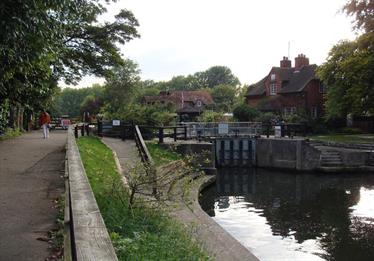
always remember “he was under a large tree”, our investigations suggest this was a poor-grave.
Some years later after the War, my grandmother had a gravestone erected for her parents, but was always upset she was unable to do the same for her little brother Freddie, as being a poor grave the grave was neither marked nor recorded.
Some years later after the War, my grandmother had a gravestone erected for her parents, but was always upset she was unable to do the same for her little brother Freddie, as being a poor grave the grave was neither marked nor recorded.
Sonning
This story begins in a small Berkshire village on the outskirts of Reading called Sonning.
This is a beautiful village which the River Thames runs through and has its own Lock (Sonning Lock).
There is a footpath running along side St. Andrew’s Church which is easily reachable by walking through the grounds
This is a beautiful village which the River Thames runs through and has its own Lock (Sonning Lock).
There is a footpath running along side St. Andrew’s Church which is easily reachable by walking through the grounds
At the time of the first visit with Mum, we were discussing Mary’s birthplace and mum remembered her mother Nora taking her to visit as a child. She also told us how Nanny had on occasions visited with her mother Mary, and that she came from a fishing family in a small fishing village.
This prompted us into finding Mary’s birth place, mum had always wondered about the family and if there was anyone still living in the area.
This prompted us into finding Mary’s birth place, mum had always wondered about the family and if there was anyone still living in the area.
Research
We were already members of Ancestry (see research info) and with the information from the grave in Sonning and armed with the information and knowledge Mum had, we set about researching it.
We religiously checked birth, death and census records. We were lucky enough to already have my Grandmother Nora’s Death certificate
We were already members of Ancestry (see research info) and with the information from the grave in Sonning and armed with the information and knowledge Mum had, we set about researching it.
We religiously checked birth, death and census records. We were lucky enough to already have my Grandmother Nora’s Death certificate
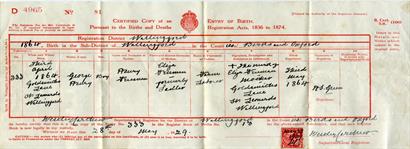
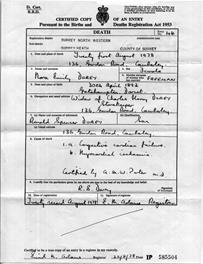
and my great grandfather George’s birth certificate’s, which gave us a lot of basic information. These confirmed the information on the gravestone for George and from that we were able to trace his birth and marriage.
We were ecstatic when we found Mary’s maiden name ‘Gape’, which in turn along with her marriage, birth and census details led us to her birth home.
Our next move was to show mum our finds and see if any of it jogged her memory, and guess what? It did. She remembered her mother telling her the name of Gape and the name of Mary’s birth village rang a bell, this also confirmed what we had found.
We were ecstatic when we found Mary’s maiden name ‘Gape’, which in turn along with her marriage, birth and census details led us to her birth home.
Our next move was to show mum our finds and see if any of it jogged her memory, and guess what? It did. She remembered her mother telling her the name of Gape and the name of Mary’s birth village rang a bell, this also confirmed what we had found.
So we now had Mary’s birth name of Gape and her birth village of Puncknowle, West Dorset
Mary Elizabeth Gape
|
Married 1885
|
George Henry Freeman
|
1864 - 1915
|
1864 - 1945
|
|
Bn. (Born) Puncknowle
|
Bn. Wallingford
|
|
Children
|
||
Charles James
|
1886 -
|
Wallingford
|
Lillie Maria
|
1888 - 1926
|
Winterbrook
|
Thomas H
|
1890 -
|
Wokingham
|
Nora Emily
|
1892 - 1978
|
Goring
|
Frederick Ernest
|
1894 - 1895
|
Henley
|
Ernest Edward
|
1901 - 1981
|
Sindlesham
|
We still have information missing, we hopefully, will discover more in the not too distant future!
West Dorset Research
By the time we visited West Dorset to further our research we had recorded the Gape line back to the 1700’s in Bridport, Dorset, and Samuel Gape’s spouse’s (Edith Cheney) line (my 4 x Great Grandparent’s) back to approximately 1585 in Corfe.
By the time we visited West Dorset to further our research we had recorded the Gape line back to the 1700’s in Bridport, Dorset, and Samuel Gape’s spouse’s (Edith Cheney) line (my 4 x Great Grandparent’s) back to approximately 1585 in Corfe.
John Gape
|
Married 1860
|
Elizabeth Pitman
|
1813 - 1896
|
1826 - 1898
|
|
Bn. Puncknowle
|
Bn. Abbotsbury
|
|
Children
|
||
John James
|
1861 -
|
Puncknowle
|
Elizabeth Mary
|
1962 - 1892
|
Puncknowle
|
Mary Elizabeth
|
1864 - 1915
|
Puncknowle
|
John Charles
|
1864 - 1899
|
Puncknowle
|
Sarah Ann
|
1868 -
|
Puncknowle
|
Mary Gape’s parents were John Gape born in Puncknowle and Elizabeth Pitman born in Abbotsbury.
One piece of information we found and confirmed was John Gape and Elizabeth Pitman had both been married before. They had 11 surviving children between them, John and Elizabeth had 5, John and Mary Northover (his 1st wife) had 3, and Elizabeth and Edmund Northover (her 1st husband) had 5, but only 3 of Elizabeth and Edmund’s children survived, 2 died very young.
One piece of information we found and confirmed was John Gape and Elizabeth Pitman had both been married before. They had 11 surviving children between them, John and Elizabeth had 5, John and Mary Northover (his 1st wife) had 3, and Elizabeth and Edmund Northover (her 1st husband) had 5, but only 3 of Elizabeth and Edmund’s children survived, 2 died very young.
Another interesting piece of information we uncovered was that Mary and Edmund Northover were 2nd cousins. So John and Elizabeth’s children from their first and second marriages were not only half siblings, but they were also 3rd cousins and this joined the Gape’s and Northover’s in more ways than one!
Mary
Northover
|
Married 1840
|
John Gape
|
1813 - 1858
|
1813 - 1896
|
|
Bn. Swyre
|
Bn. Puncknowle
|
|
Children
|
||
Henry
|
1835 -
|
Puncknowle
|
Emily
|
1842 - 1909
|
Puncknowle
|
Walter
|
1846 - 1915
|
Puncknowle
|
Elizabeth Pitman
|
Married 1847
|
Edmund
Northover
|
1826 - 1898
|
1824 - 1859
|
|
Children
|
||
Hester Pitman
|
1848 -
|
Swyre
|
William
|
1859 -
|
Swyre
|
John
|
1852 -
|
Swyre
|
James
|
1856 - 1860
|
Swyre
|
Mary
|
1858 - 1860
|
Swyre
|
Mary
Northover
|
Mary and Edmund Northover were 2nd cousins
|
Edmund
Northover
|
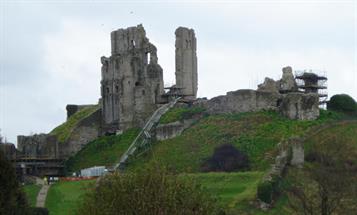

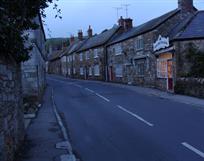
The wealth of information held in West Dorset is rich and plentiful.
We found that Ancestry (see research info) did not hold many of the West Dorset census’s at the time and we needed to check parish records. Some of these were on Dorset OPC (see research info), but not all, we therefore needed to find some more and this led us to Bridport history centre.
We found that Ancestry (see research info) did not hold many of the West Dorset census’s at the time and we needed to check parish records. Some of these were on Dorset OPC (see research info), but not all, we therefore needed to find some more and this led us to Bridport history centre.
Bridport Local History Centre holds lots of information, including details of Public Houses and Inn’s, Maps and Plans, Trade directories, Publications, Transcripts of nominal rolls, Parish Registers and much more.
We had already prepared some census’s from the area onto searchable spreadsheets, and as the Centre only had microfilm and microfiche readers and did not have much available on their computers (apart from internet access), we uploaded our spreadsheets onto their system. This we hope will make it easier for visitors to conduct some of their searches.
We also visited Bridport Museum, they hold a wealth of information, and the staff are always helpful; The museum has some very informative displays with a history through time on the area, most families had one or more members involved in the Rope, Net and Twine industry, the museum covers the history of this industry using a walk through tour display. There is another area devoted to the Seine fishing industry, the local smuggling is not forgotten, but a trip to the Time walk, Brewers Quay in Weymouth is well worth a visit for this subject.(Please note, the museum does not hold any records)
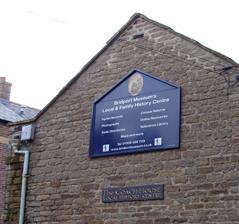
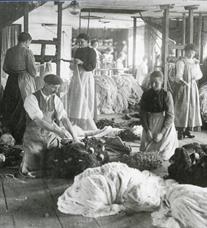
Our first visit to the Dorset History Centre in Dorchester:
Again the wealth of information is quite astonishing, So many records and so little time. We had the daft idea of spending half a day there!! We ended up spending the whole day and yet we still had so much more research to do there. Some of the records we found and went through were, Alehouse Licensing, Bastardy Records, Prison admissions, Tithe appointments and School records etc.
Again the wealth of information is quite astonishing, So many records and so little time. We had the daft idea of spending half a day there!! We ended up spending the whole day and yet we still had so much more research to do there. Some of the records we found and went through were, Alehouse Licensing, Bastardy Records, Prison admissions, Tithe appointments and School records etc.
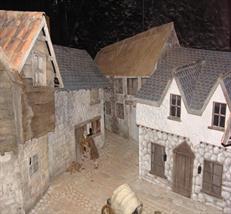
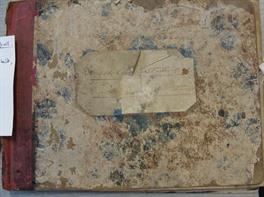
We hope to eventually get as much of our research from Dorchester onto this site as we possibly can. Although if you can visit the centre, it is well worth the trip, just to be able to see and touch these old documents is amazing. Also not all transcriptions’ are without error and you can see these documents for yourself, and maybe you can either interpret them differently or find further information not in the transcription.
We find all routes are necessary when researching, and they all seem to have either different or more information, plus some internet sites have transcripts that other sites don’t. Here are some of the sites we use on the internet:-Ancestry, British Pathe, Dorset OPC, Family Search, Fibis, Find my Past, Genealogist, Genes Reunited, Military Genealogy, National Archives, RootsWeb and 192.com. We have even found a family tree on the internet that was part of our extended European family.
Some of the places we visit for research are: - The British Library in London, Local History Centres, Museums and The National Archives. You can find further details of the above internet sites and research centres on our research information page.
By far one of the most rewarding research areas we have found is to visit the towns and villages of our ancestors and look around the parish churches and churchyards.
Some of the places we visit for research are: - The British Library in London, Local History Centres, Museums and The National Archives. You can find further details of the above internet sites and research centres on our research information page.
By far one of the most rewarding research areas we have found is to visit the towns and villages of our ancestors and look around the parish churches and churchyards.


Our next move was to visit the villages my family came from.
Ann lives opposite the church in 2 cottages that she has had converted into one, and she also owned the one next to it as well. The cottages were originally one up one down with no mains water, no kitchen and no indoor bathroom or toilet. Large families of up to 14 lived in each of these dwellings. They had to get water from a pump down the road and it wasn’t until the 1960’s that they actually received the luxury of a mains water supply.
Ann was kind enough to show us around her home and the third cottage, which was the very one that my ancestors had lived in.
She informed us that she lets the third cottage out and is normally booked up to a year in advance, but to our surprise she had a week available in a few months time, so we booked it there and then.
Many churches no longer hold their own records or copies (we have also found, sadly, that some churches who still hold records try to profit from them and now charge unreasonable prices to ‘look up’ in them), which is such a shame, as visitors are no longer able to find any information and records when they visit. A lot of information is searchable on the internet (often at a cost), but you have to remember, that what you are looking for may not yet be available on the internet, and if it is a transcribed version the accuracy is only as good as the transcribers! Also not everybody has access to the internet! Today however this is not so much a problem, all library’s and history centres have internet for no charge. All you need is a reader’s card (that can be used at most centres); most history centres have internet and access to ‘Ancestry’ for no extra charge (but if they are busy, you will need to book use of their computers). Most local history centres have a small charge to join, but in return they send news letters, and if asked, they will also do a ‘look-up’ for you at the local records office. The records that were appertaining to the church that we had converted to spreadsheet, we printed out, and on our next visit we handed these to Ann.
The first visit was to Puncknowle; we found and looked around St.Mary’s Church.
This is where we met Ann who looks after the church and what remains of its records. She had managed to hand write some of the burial plots, as the history centre had removed all the records and held on to them.
This is where we met Ann who looks after the church and what remains of its records. She had managed to hand write some of the burial plots, as the history centre had removed all the records and held on to them.
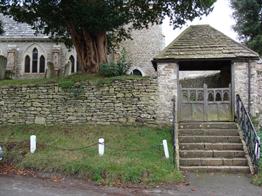

We then took a look around The Crown, a sixteenth century inn that some of my relations (Gapes/Northover’s) had run / worked in.
We discovered that the original Crown Inn was in fact a small cider house that was slightly further back down the road, situated at the end of the Crown as it stands now, you can see its features in the brickwork.
We discovered that the original Crown Inn was in fact a small cider house that was slightly further back down the road, situated at the end of the Crown as it stands now, you can see its features in the brickwork.
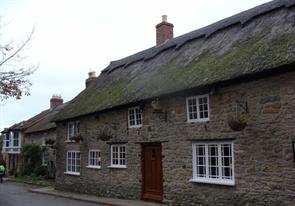
This is where we were introduced to Michael Ebdon, known locally as the mayor of Swyre (his nickname); he is a local authority on the villages of Swyre and Puncknowle and knew a
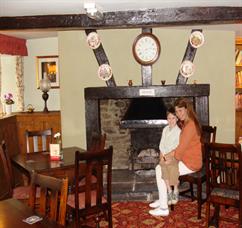
lot of the old residents and the old ways.We asked him what he knew of the Gape’s and if he knew whether there were any still living in the area. To our surprise he told us that he knew them and that he was friendly with Desmond Gape (mum’s cousin), and that he knew exactly where they lived. He didn’t know the written address but directed us to the actual family home in Burton Bradstock.
The rest for us is history and we are so happy to now be in touch regularly with our family; who welcomed us with open arms. The saddest event was to learn of Desmond’s passing, but his children are his legacy and a credit to him and his wife Nancy. We love them dearly, and it feels like we’ve always known them.
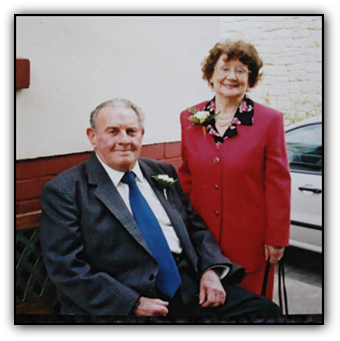
resemblance instantly in myself and my youngest son.
Nancy very kindly invited us in for a cup of tea, and told us about her husband Desmond Gape and their children.
As I entered her lounge, I was drawn to a photograph on the side, thinking I know the person in this photograph? When Nancy came into the room with tea, I asked who it was in the photograph, as it was the spitting image of my eldest son Adam.
Imagine my surprise when she told me it was her grandson Adam, who was the same age as my son; there was just a 9 month age gap between them.
I showed her the photo of my son Adam that I carry around in my handbag, and she was just as surprised as us. Obviously we swopped copies of the photos.
Nancy very kindly invited us in for a cup of tea, and told us about her husband Desmond Gape and their children.
As I entered her lounge, I was drawn to a photograph on the side, thinking I know the person in this photograph? When Nancy came into the room with tea, I asked who it was in the photograph, as it was the spitting image of my eldest son Adam.
Imagine my surprise when she told me it was her grandson Adam, who was the same age as my son; there was just a 9 month age gap between them.
I showed her the photo of my son Adam that I carry around in my handbag, and she was just as surprised as us. Obviously we swopped copies of the photos.
Our first visit to Nancy was unbelievable, she was so welcoming and warm, and recognised the family
We had to return home to Kent that evening, but knew in our hearts it was only going to be a short time before returning. We had lots of photo’s and information to read to and show mum. Due to her failing eyesight, Les had scanned the photos of the family and had them blown up to A4 in the hope that Mum might be able to see some of the faces. We were also lucky enough to have an audio recording of Desmond Gape’s voice. Nancy had kept a copy on tape of a radio interview with Desmond about Seine Fishing.
Everytime we go back now, for either research, family visit’s (we have family in Bournemouth, Devon and Cornwall as well) or even just a holiday, we always feel like we are going home. We hope to eventually have a much more permanent base in the Bride Valley.
Lesley Keatley
Everytime we go back now, for either research, family visit’s (we have family in Bournemouth, Devon and Cornwall as well) or even just a holiday, we always feel like we are going home. We hope to eventually have a much more permanent base in the Bride Valley.
Lesley Keatley
The two Adam’s are 4th cousins and we decided they must be true throw backs of the Gape line.
I was lucky enough to meet Adam whilst visiting Nancy, I had been using the bathroom, and when I came back into the room Adam was standing there, and I had an even bigger shock, both Adam’s were about the same height and exactly the same build, including the broadness across the shoulders. It was like they had been twins separated at birth.
I was lucky enough to meet Adam whilst visiting Nancy, I had been using the bathroom, and when I came back into the room Adam was standing there, and I had an even bigger shock, both Adam’s were about the same height and exactly the same build, including the broadness across the shoulders. It was like they had been twins separated at birth.

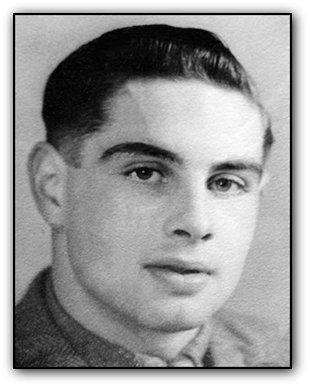
Me (small one) with Nanny & Dad-dad
Mum & Dad with my eldest son Adam
My family
Nanny with my Uncle Ron
Mary was buried at St Andrews in Sonning.
Mary and George Freeman's Grave (cleaning started)
Sonning Lock
Mum watching the cleanup
the ruins of Corfe Castle, Corfe
old Puncknowle
Abbotsbury
Since we began our research the churchyards are being looked after far more, they seem to be cutting back the overgrown areas and removing the weeds and nettles. We believe this is because more researchers are visiting the churchyards and caring for the gravestones.
The gravestones have information that can quite often help with names and nicknames and dates. We clean and restore as many of our ancestors graves as possible, as the churches tend to remove headstones of over 100 years when they begin to deteriorate, but they are less likely to remove the stone if they can see someone is caring and looking after it.







